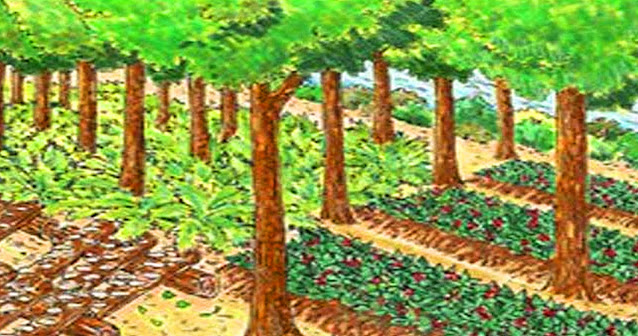Agroforestry is all sustainable or sustainable land use patterns, which can maintain and increase the optimal overall yield by combining food crops, annual, and economic value tree crops, with or without livestock or domestic fish, on land and at the same time or time. taking turns with practical management methods that suit the social and cultural conditions of the local population.
Agroforestry classification can be based on various aspects according to perspectives and interests, namely classification based on its constituent components, agroforestry classification based on the technical terms used, agroforestry classification based on the period of its development and agroforestry classification based on agroecological zones.
Agroforestry is an integrated form of land use (forestry, agriculture and / or livestock)
The agroforestry classification is based on its constituent components, namely:
 |
- Agrisilvicultural systems
- Agrisilvikultur is an agroforestry system that combines a forestry component (or woody plants) with an agricultural component (or non-timber crops). For example: Mahogany trees are planted in rows between cassava
- Silvopastura (Silvopastural systems)
- The silvopastura system is an agroforestry system that includes a forestry component (or woody plants) with a livestock (or livestock / pasture) component. Example: Trees and shrubson pastures
- Agrosilvopastura (Agrosilvopastural systems)
- Agroforestry agroforestry system is a combination of woody components (forestry) with agriculture (seasonal) and at the same time livestock / animals in the same land management unit. Example: Parak in Maninjau with various kinds of trees such as cinnamon, nutmeg, durian, as an understorey cardamom (Ammomum cardamomum) and some wild ferns from the forest.
|

